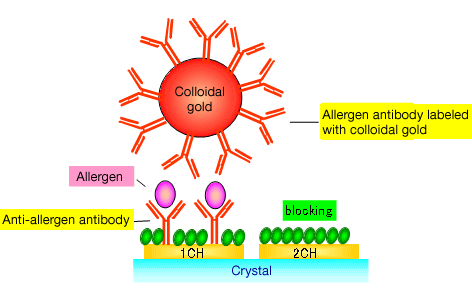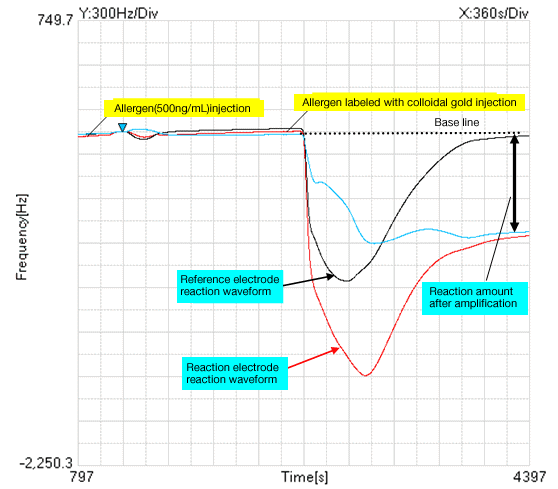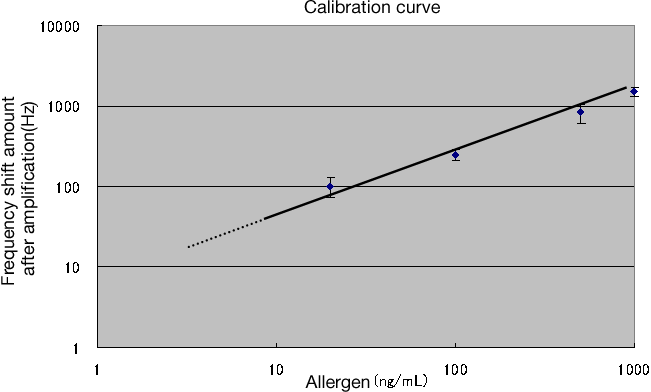Measurement of allergen contained in food extract
Measurement of allergen contained in food extract
As an example of the measurement of food extract, a kind of allergen was measured. First, allergen was injected, and then colloidal gold-labeled allergen antibody was injected as amplification reagent. The waveform showed that the reaction occurred only on the reaction electrode. This experiment was made with the cooperation of Morinaga Institute of Biological Science, Inc. The allergen and the colloidal gold were provided by this institute.
1.Protocol
- Sensor:30MHz twin sensor
- Flow rate:20μL/min
- Sample amount:100μL
- Running buffer:Buffer containing SDS
- Sample:Allergen
- Sensitization material:Allergen antibody labeled with colloidal gold

Fig.1: Diagram
2.Reaction waveform
First, allergen was injected and then sensitizer was injected. The graph below shows the reaction wave form. Because of a change in the composition of the amplification reagent and running buffer, a significant frequency shift was observed right after the injection.

Fig.2: Measurement waveform
3.Concentration dependency
The measurement was done at the allergen concentrations of 20ng/mL,100ng/mL,500ng/mL and 1,000ng/mL (N=3). Figure 3 shows the standard curve after amplification.
The results show that allergen can be measured quantitatively in the concentration range between 20ng and 1,000ng/mL.

Fig.3: Allergen calibration curve after amplification
4.Glossary
| Allergen | A substance (protein) which causes allergic reaction. |
| SDS (Sodium Dodecyl Sulfate) | A kind of surface acting agent used for dissolving hardly-soluble proteins. In this experiment, it was used for extracting protein from an egg. For this reason, the injected sample contained SDS. |
